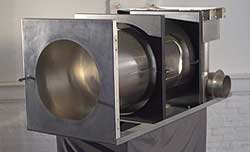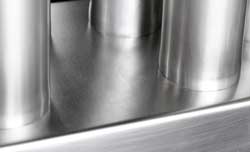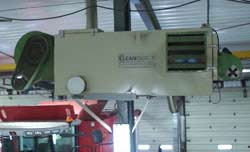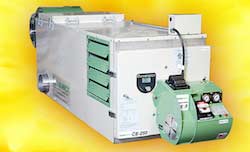Can Waste Oil Furnaces Burn Synthetic Oil?
As more business owners are learning about the impressive cost saving benefits of heating their facilities with a waste oil furnace, there remains misinformation about what exactly these furnaces can burn. But don’t let myths and rumors influence your decision on which furnace to purchase!
It’s true that not all waste oil furnaces burn synthetic oil, but some do! And that’s why we’re here to take a closer look at the materials you can use in Clean Energy waste oil furnaces to generate free heat for your operation.
At Clean Energy Heating Systems, our waste oil heaters are designed and built to turn your used motor oil and other used petroleum-based fluids into free heat. And they DO burn synthetic oil! So if you generate used synthetic oil and you’re looking to make a significant difference on your business’s bottom line in the months and years ahead, keep reading to see how our furnaces can help.
Do Clean Energy Furnaces Burn Synthetic Oil?
The simple answer is: yes! Clean Energy waste oil furnaces do burn synthetic oil.
Whether you own or operate a car dealership, garage, trucking business, agricultural business or any other operation that produces waste oil, you can generate free heat for your facility by burning used synthetic oil. Although synthetics are made differently than traditional crankcase oils, they can be a great source of free heat for your shop.
Most shops won’t have any trouble burning 100% synthetic oil. However, some facilities find that their waste oil furnaces are most efficient when they mix their used synthetic oil with other used oils or diesel fuel. If you aren’t sure whether your particular waste oil will work in a Clean Energy heater, feel free to contact us and discuss your questions with one of our technicians.
Is Traditional or Synthetic Oil Better For Waste Oil Furnaces?
Generally speaking, non-synthetic oils are better to use in waste oil furnaces, mainly due to their low flashpoint. When it comes to igniting the fuel inside the furnace, the lower the flashpoint, or the temperature at which the vapor over the oil ignites, the better the ignition of the furnace. Conversely, synthetic oil has a higher flashpoint, which means it requires a higher temperature to ignite, and it might have some difficulty igniting in cold climates.
Keep in mind that there are other variables that will affect ignition – regardless of whether it’s synthetic or traditional. For example, if your oil is stored in an outside tank, it’s likely cooler when delivered to the burner, but if it is in a warmer, inside tank, it should theoretically be easier to light. At Clean Energy, we’re happy to discuss the different types of oils our furnaces can burn to help your shop save money on heating costs and dispose of waste oil in a regulatory-compliant, eco-friendly way.
Can Clean Energy Furnaces Burn a Mixture of Oil Products?
Yes! Our machines are U.L.-listed to burn various mixtures of oil products that include used crankcase oil, used automatic transmission fluid, used hydraulic oil and #2 heating oil and diesel fuel. Keep in mind that brand new, never-used fluids will have a higher flashpoint, which is why we recommend sticking with mixtures of used oil products for your waste oil heater.
If you own a car dealership or facility that handles both synthetic oil and conventional oil waste products, rest assured that you can safely and efficiently burn both types of fluids together to generate free heat for your shop. Even better, combining oils lowers the flashpoint of the fluid, meaning the mixture will ignite at lower temperatures than all-synthetic oil.
Ready to Learn More?
If you have questions about burning synthetic oil or you’d like more information about the environmental benefits and cost savings of using a waste oil furnace in your facility, contact our team today. We can answer your questions and help you determine which waste oil furnace is best-suited for your shop. We look forward to hearing from you!


















